Senators cover new ground in Western soil health fact-finding mission
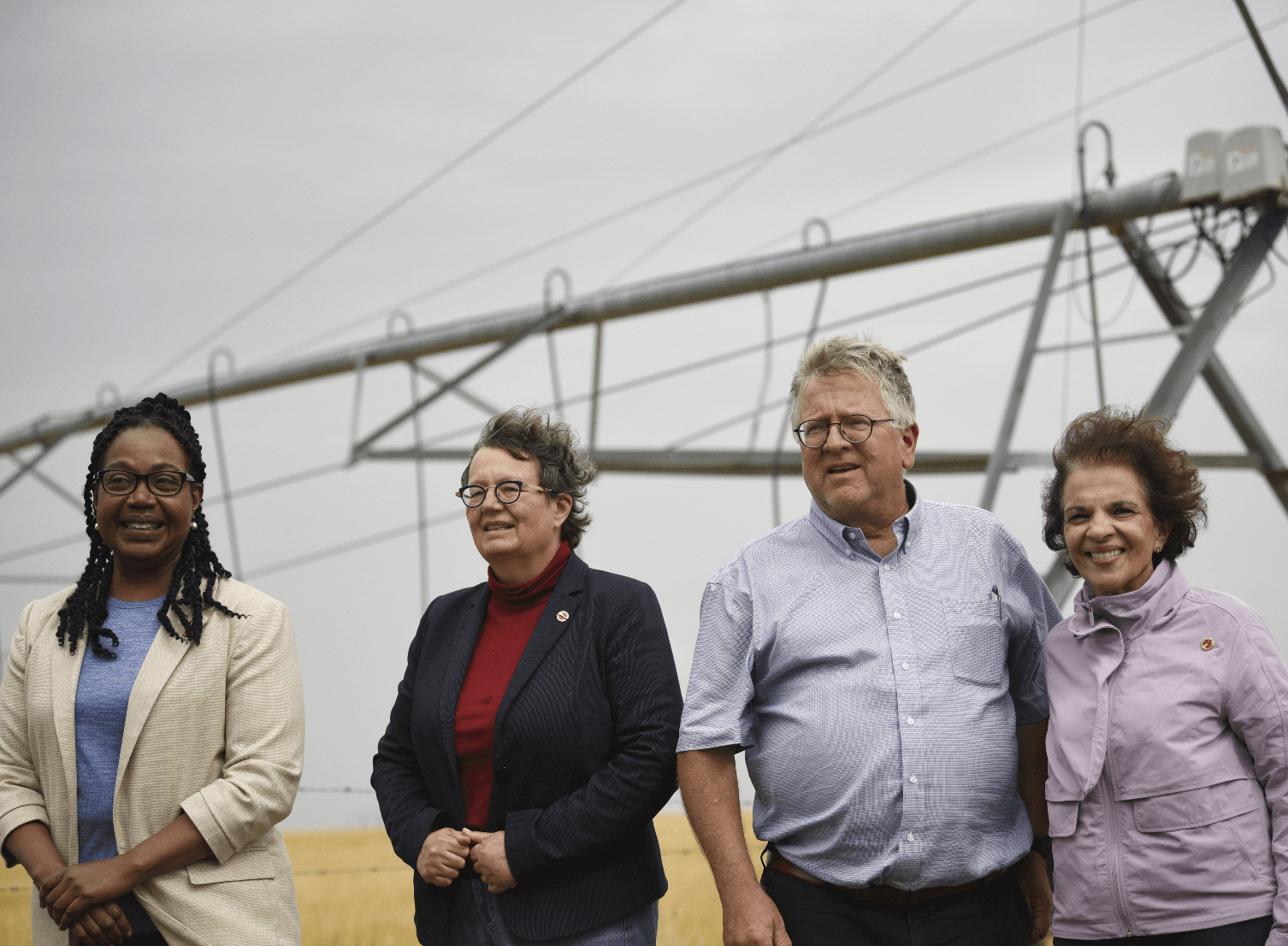
Mere millimetres below the surface of the vast Canadian Prairies is a rich resource of life-sustaining biodiversity.
“There’s so much going on beneath our feet. Thousands of tiny creatures live in our soil. If we want to keep feeding plants — and ourselves — we’ve got to feed the soil,” said Senator Paula Simons, who represents Alberta and is deputy chair of the Senate Committee on Agriculture and Forestry.
Senators on the committee covered new ground in their soil health study during a fact-finding mission to Alberta and Saskatchewan in August 2023.
Watch: Follow the committee’s footsteps on its western fact-finding mission.
Canada’s diverse regions feature unique soil composition and distinct soil management solutions. Senators previously visited Guelph, Ontario to examine how soil is used, protected and enhanced.
But soil can vary dramatically even within a small geographical area, depending on factors like geology, climate and use.
For example, at the University of Saskatchewan’s Kernan Crop Research Farm, senators examined soil core samples taken every 200 metres over the course of one kilometre.
Each of the five soil samples showed different characteristics, values and nutrients — diversity that underscores what senators are hearing as part of the study.
“Talking to people on their home turf is vital,” explained committee chair Senator Rob Black. “The ways in which challenges like erosion, compaction, overuse of fertilizer and climate change are confronted differ province to province.”
Senators are keeping those differences in mind as they examine policy options that will be a part of their final report.
“One policy or program won’t fit all when it comes to soil health,” said Senator Black.
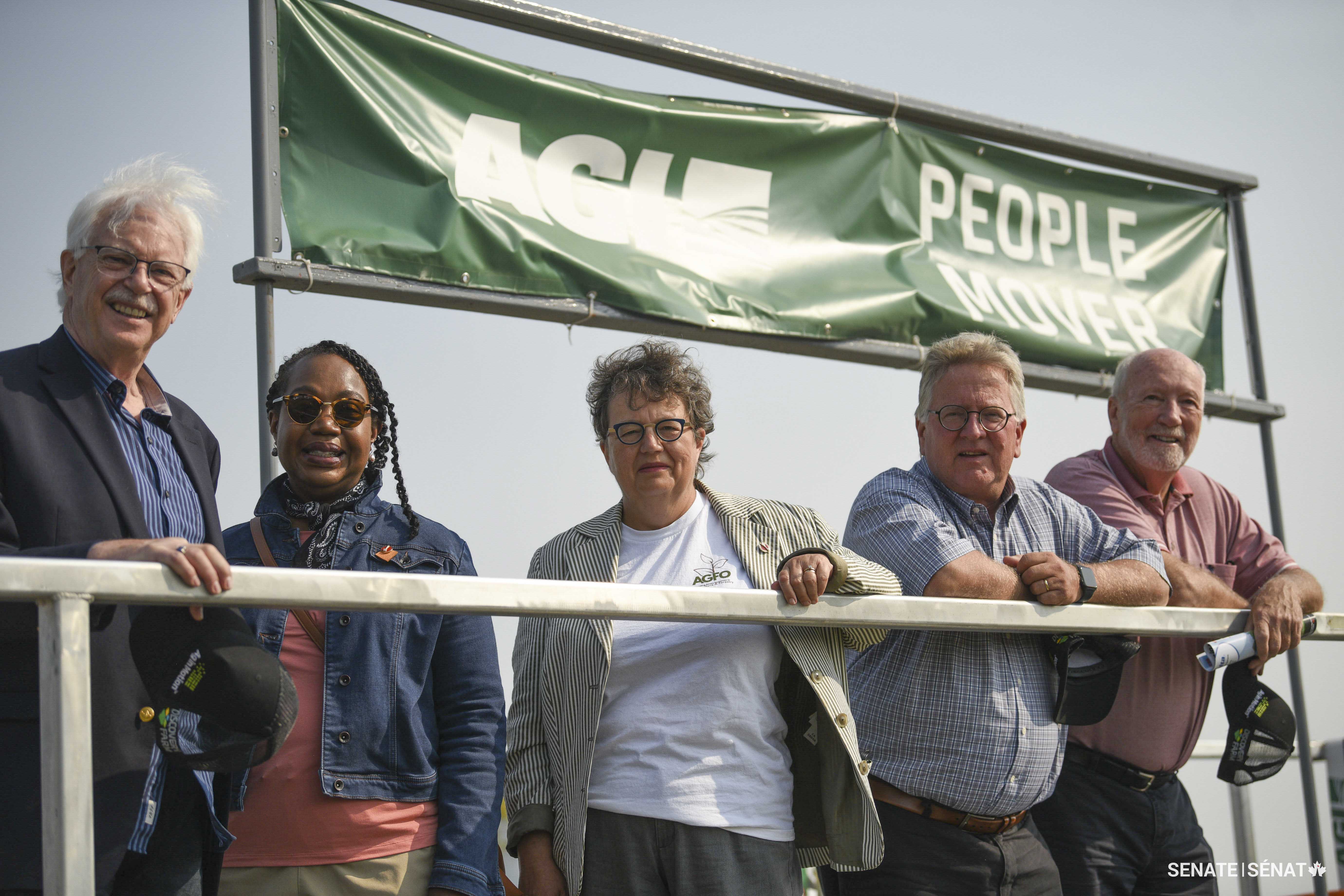
Senators visit the Glacier FarmMedia Discovery Farm in Langham, Saskatchewan as part of the Standing Senate Committee on Agriculture and Forestry’s study of soil health.
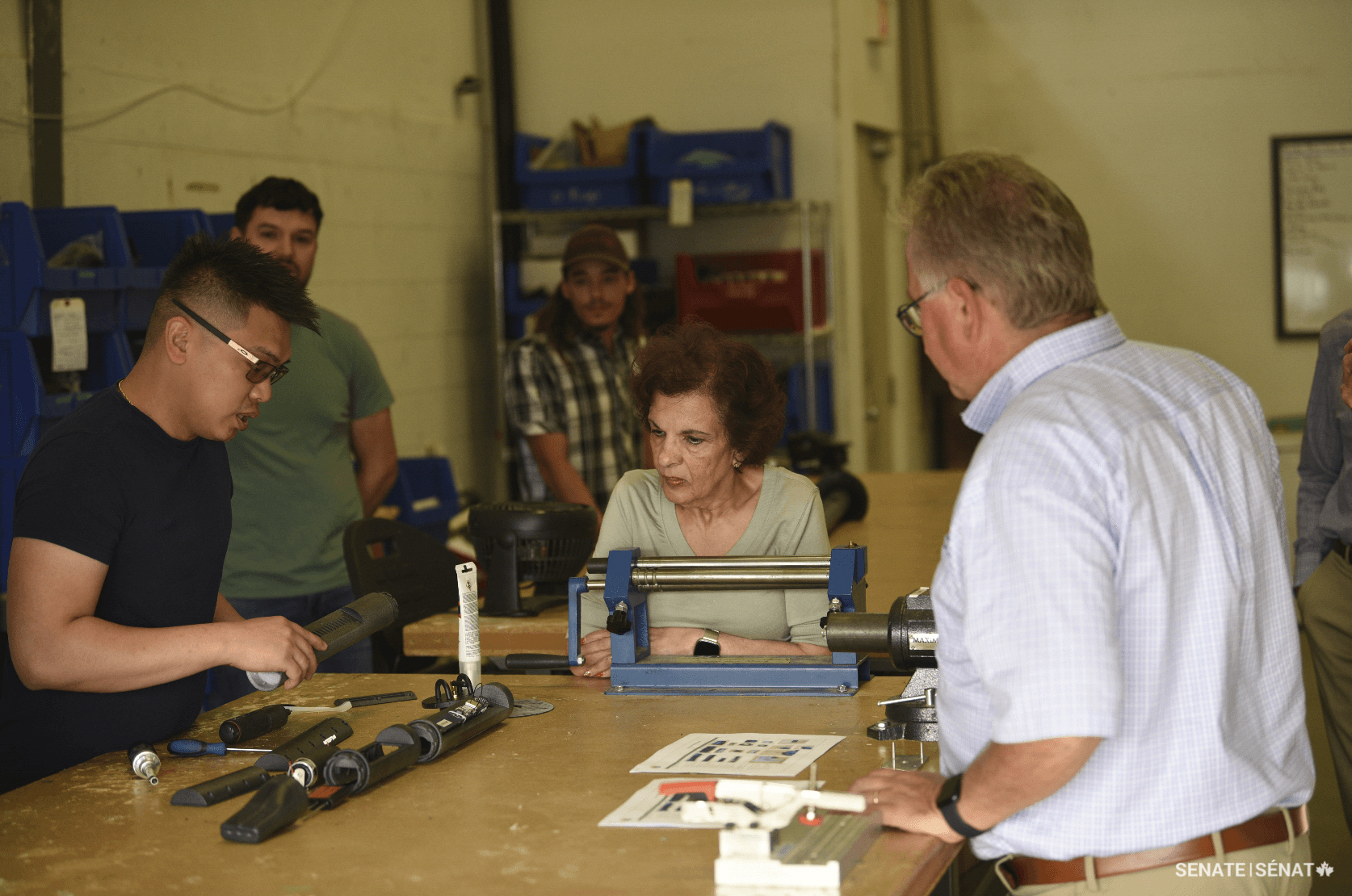
Technicians at Environmental Material Science Ltd. show senators Mobina Jaffer and Rob Black how to assemble and install soil mapping sensors.
But there has been one constant — farmers and ranchers are leading the way by implementing solutions rooted in science and technology.
In Saskatchewan and Alberta, senators saw how soil sensors give farmers and ranchers real-time data about moisture, salinity, nutrients and yields to help maximize crop production and enhance soil health.
Senators also dug into the dark, moist soil of never-cultivated, native grassland to see how it compared to that of nearby tilled soil, which was dryer and lighter.
Senators also saw how precision planting technology is less disruptive to the soil. Massive seed drills, for example, place seeds at the correct depth and then press soil back in the hole, limiting erosion and keeping vital nutrients (and carbon) in the soil.
Drought-like conditions in parts of the region fed into conversations around how healthy soil can fight climate change by storing carbon and mitigating its effects by retaining moisture, soil organic matter and essential nutrients.
“Soil management has repercussions far beyond the farm,” Senator Black pointed out. “Soil is at the root of our whole way of life.”
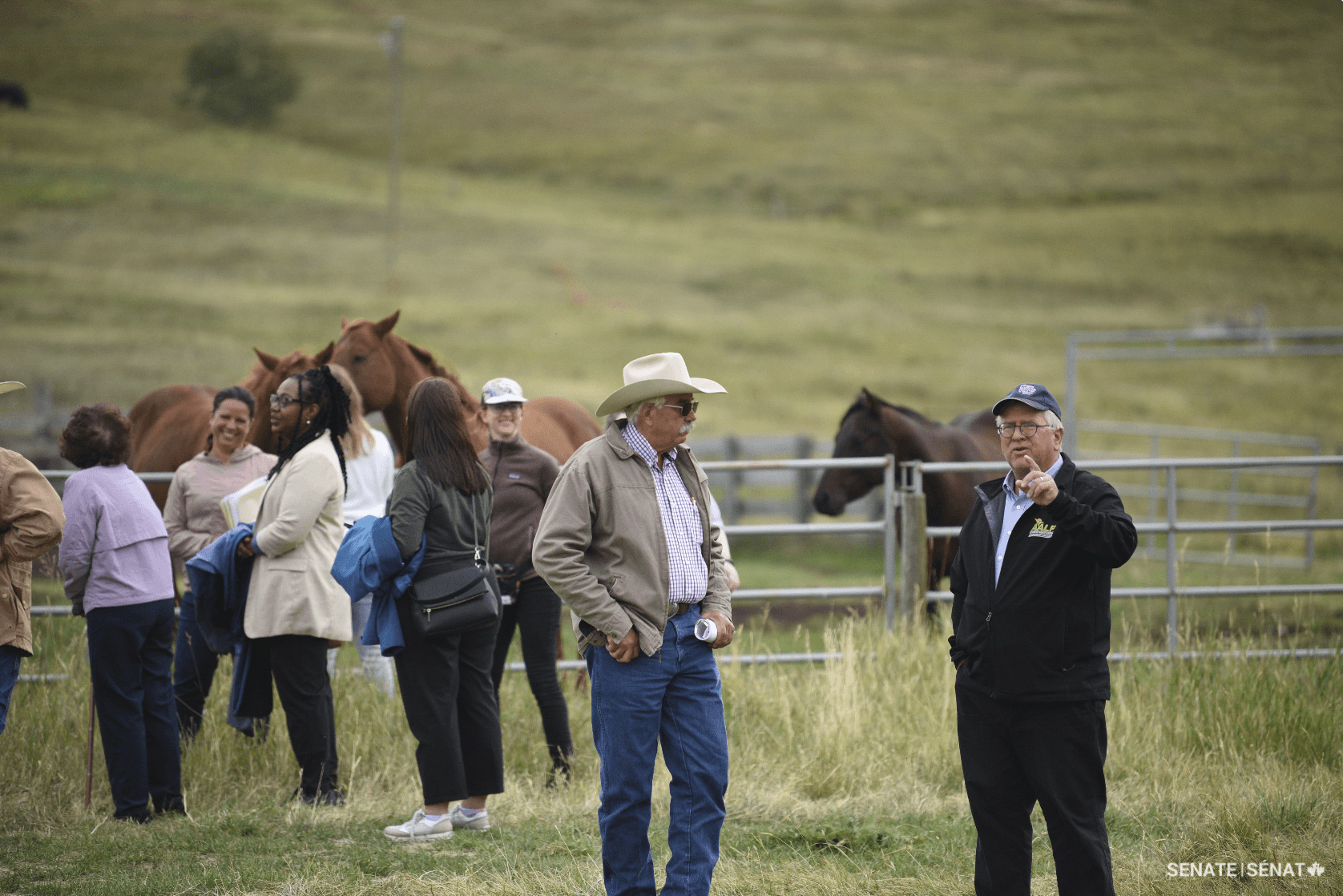
Senate Committee on Agriculture and Forestry chair Senator Rob Black, right, speaks with Bill Newton at Mr. Newton’s South Porcupine Ranch in Willow Creek, Alberta. The ranch is home to native grasslands — some never cultivated — that are used for grazing livestock.
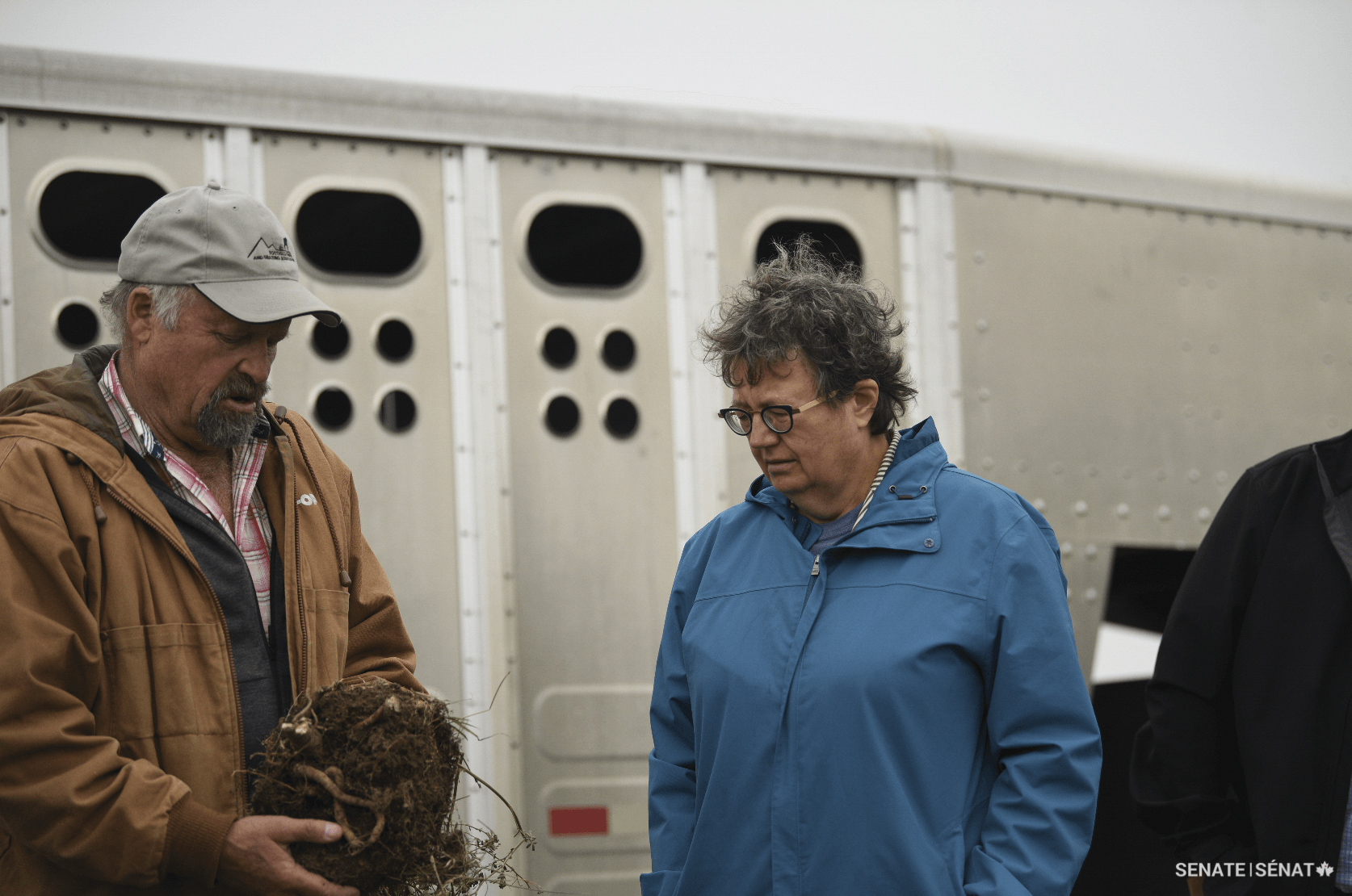
Rancher Doug Wray shows Senator Paula Simons a plant’s root system at his cattle ranch near Irricana, Alberta.
Related articles
Tags
Committee news
Senators cover new ground in Western soil health fact-finding mission

Mere millimetres below the surface of the vast Canadian Prairies is a rich resource of life-sustaining biodiversity.
“There’s so much going on beneath our feet. Thousands of tiny creatures live in our soil. If we want to keep feeding plants — and ourselves — we’ve got to feed the soil,” said Senator Paula Simons, who represents Alberta and is deputy chair of the Senate Committee on Agriculture and Forestry.
Senators on the committee covered new ground in their soil health study during a fact-finding mission to Alberta and Saskatchewan in August 2023.
Watch: Follow the committee’s footsteps on its western fact-finding mission.
Canada’s diverse regions feature unique soil composition and distinct soil management solutions. Senators previously visited Guelph, Ontario to examine how soil is used, protected and enhanced.
But soil can vary dramatically even within a small geographical area, depending on factors like geology, climate and use.
For example, at the University of Saskatchewan’s Kernan Crop Research Farm, senators examined soil core samples taken every 200 metres over the course of one kilometre.
Each of the five soil samples showed different characteristics, values and nutrients — diversity that underscores what senators are hearing as part of the study.
“Talking to people on their home turf is vital,” explained committee chair Senator Rob Black. “The ways in which challenges like erosion, compaction, overuse of fertilizer and climate change are confronted differ province to province.”
Senators are keeping those differences in mind as they examine policy options that will be a part of their final report.
“One policy or program won’t fit all when it comes to soil health,” said Senator Black.

Senators visit the Glacier FarmMedia Discovery Farm in Langham, Saskatchewan as part of the Standing Senate Committee on Agriculture and Forestry’s study of soil health.

Technicians at Environmental Material Science Ltd. show senators Mobina Jaffer and Rob Black how to assemble and install soil mapping sensors.
But there has been one constant — farmers and ranchers are leading the way by implementing solutions rooted in science and technology.
In Saskatchewan and Alberta, senators saw how soil sensors give farmers and ranchers real-time data about moisture, salinity, nutrients and yields to help maximize crop production and enhance soil health.
Senators also dug into the dark, moist soil of never-cultivated, native grassland to see how it compared to that of nearby tilled soil, which was dryer and lighter.
Senators also saw how precision planting technology is less disruptive to the soil. Massive seed drills, for example, place seeds at the correct depth and then press soil back in the hole, limiting erosion and keeping vital nutrients (and carbon) in the soil.
Drought-like conditions in parts of the region fed into conversations around how healthy soil can fight climate change by storing carbon and mitigating its effects by retaining moisture, soil organic matter and essential nutrients.
“Soil management has repercussions far beyond the farm,” Senator Black pointed out. “Soil is at the root of our whole way of life.”

Senate Committee on Agriculture and Forestry chair Senator Rob Black, right, speaks with Bill Newton at Mr. Newton’s South Porcupine Ranch in Willow Creek, Alberta. The ranch is home to native grasslands — some never cultivated — that are used for grazing livestock.

Rancher Doug Wray shows Senator Paula Simons a plant’s root system at his cattle ranch near Irricana, Alberta.


